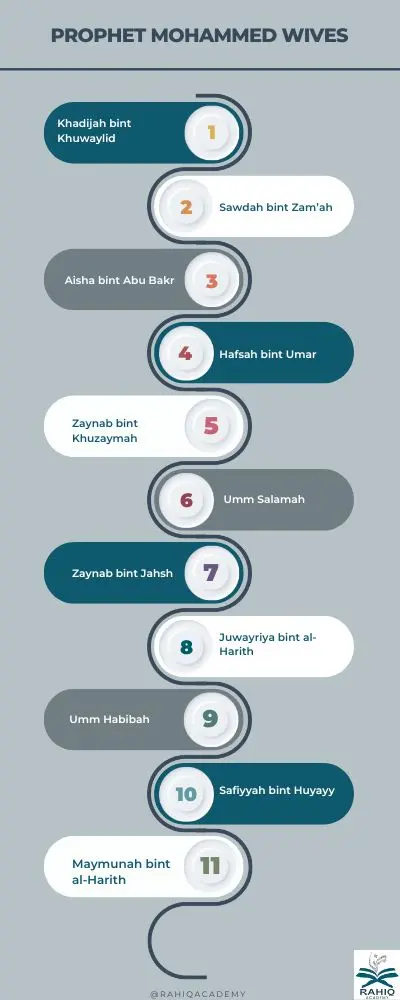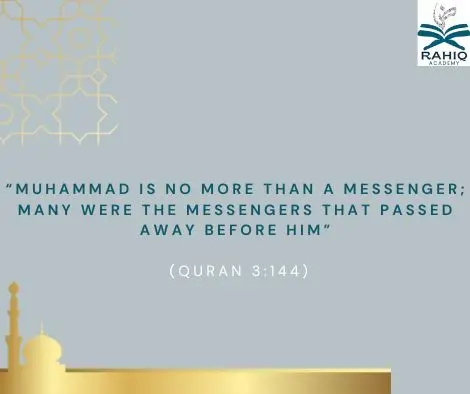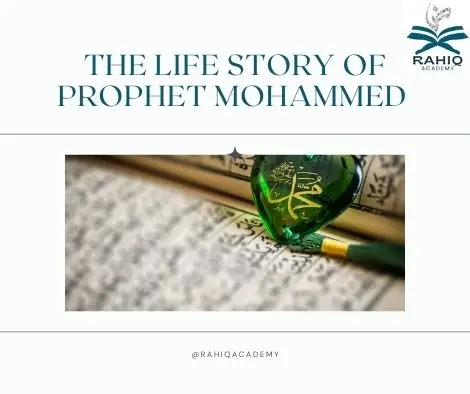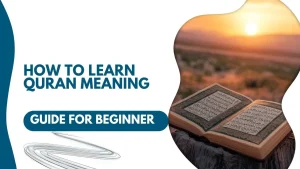Prophet Mohammed, born in Mecca in 570 CE, is the last prophet in Islam and is regarded as a model of mercy, compassion, and dedication to Allah. His journey from an orphaned child to a respected leader transformed the lives of millions, and his legacy remains a source of inspiration for Muslims around the world. This article explores his life—born, early childhood, family tree, his wives, daughters, friends and finally his death
For Muslims in North America, Europe, Australia, and beyond, the life story of prophet Mohammed is a reminder of the timeless values that Islam upholds.
Birth and Childhood of Prophet Mohammed
Prophet Muhammad (ﷺ) was born into the noble Quraysh tribe in the Year of the Elephant, 570 CE. His father, Abdullah, passed away before he was born, and his mother, Amna bint Wahb, died when he was just six. Raised by his grandfather Abdul Muttalib and later his uncle Abu Talib, he grew up in Mecca, surrounded by the challenges and hardships that shaped his compassionate character.
As a young boy, he spent time with a Bedouin family in the desert—a practice common among Meccans to instill resilience and develop a strong grasp of Arabic.
Even as a child, Mohammed (ﷺ) was known for his honesty and kindness, earning the title Al-Amin, meaning “the trustworthy.” These qualities won him respect in the Meccan society, foreshadowing the role he would later fulfill as a prophet and leader.
Prophet Mohammed Family Tree
Prophet Mohammed family tree lineage is deeply rooted in monotheism, tracing back to Prophet Ibrahim through Ismail. His family includes:
- Father: Abdullah, who passed away before his birth.
- Mother: Amina bint Wahb, who lovingly cared for him until her death.
- Grandfather: Abdul Muttalib, a respected leader of the Quraysh tribe.
- Uncle: Abu Talib, his guardian and protector after the passing of his grandfather.
His direct ancestry underscores his role in continuing the message of Tawhid (monotheism), connecting him to a legacy of prophets who called humanity to worship Allah alone.
How Many Wives Did Prophet Mohammed Have?

Prophet Mohammed (ﷺ) was married to eleven women, each marriage serving a purpose beyond companionship. These marriages helped build alliances, provided support to widows, and served as examples of compassionate family relationships. Each of his wives, known as the “Mothers of the Believers,” played an important role in the early Muslim community.
- Khadijah bint Khuwaylid: His first and most beloved wife, Khadijah was a successful businesswoman and the first to embrace Islam.
- Sawdah bint Zam’ah: After Khadijah’s passing, he married Sawdah, a widow who provided him companionship during a time of grief.
- Aisha bint Abu Bakr: Known for her intelligence and memory, Aisha became a prominent scholar and narrated numerous hadiths.
- Hafsah bint Umar: Daughter of Umar ibn al-Khattab, Hafsah contributed to the preservation of the Quran.
- Zaynab bint Khuzaymah: Known for her generosity, she was also a widow, and the Prophet (ﷺ) cared for her with deep respect.
- Umm Salamah: A wise and respected woman, Umm Salamah was a devoted wife and mother to the Muslim community.
- Zaynab bint Jahsh: Her marriage addressed social norms related to adopted children, highlighting the Prophet’s role in setting ethical precedents.
- Juwayriya bint al-Harith: Her marriage led to the freeing of her tribe’s captives, fostering peace.
- Umm Habibah: Daughter of Abu Sufyan, her marriage to the Prophet (ﷺ) helped solidify bonds between her tribe and the Muslim community.
- Safiyyah bint Huyayy: Her marriage bridged relations with Jewish tribes, reflecting the Prophet’s commitment to unity.
- Maymunah bint al-Harith: His last marriage, which strengthened ties with various tribes in the Arabian Peninsula.
Maria al-Qibtiyya: :Some people mistakenly believe that lady Maria al-Qibtiyya was one of the Prophet’s wives
She is one of the Prophet’s handmaids, not one of his wives or one of the mothers of the believers
Rather, she was his slave, while Al-Muqawqis, the ruler of Egypt, had given her to him after the Treaty of Hudaybiyyah. She was a Christian, then converted to Islam, and gave birth to his son Ibrahim.
Each marriage had a social and humanitarian purpose, reflecting the Prophet’s dedication to the welfare of his community.
Daughters of Prophet Mohammed (PBUH)
Prophet Muhammad (ﷺ) had four daughters with Khadijah bint Khuwaylid, all of whom were dedicated to supporting their father and upholding the message of Islam.
The Daughters and Their Legacies:
- Zainab: Married to Abu al-As ibn Rabi’, Zainab showed patience and loyalty, especially during times of hardship.
- Ruqayyah: Married to Uthman ibn Affan, she accompanied him to Abyssinia, embodying the sacrifices of early Muslims.
- Umm Kulthum: After Ruqayyah’s death, she married Uthman, reinforcing the strong family ties with the Prophet (ﷺ).
- Fatimah: The youngest and dearest to the Prophet (ﷺ). She married Ali ibn Abi Talib and is remembered for her piety and devotion. The Prophet (ﷺ) said,” Fatimah is part of me. Whoever harms her harms me.” (Sahih Bukhari, 3714)
These daughters left a legacy of faith, compassion, and dedication, inspiring Muslims to embrace similar values.
Prophet Mohammed The Relations and Friends
The Prophet Mohammed maintained relationships with his companions characterized by mutual respect, love, and support. He treated each friend with kindness, setting an example of true friendship.
- Abu Bakr As-Siddiq: The Prophet’s closest friend and first adult to embrace Islam. Abu Bakr accompanied him during the Hijrah, comforting him in the cave as mentioned in the Quran: “When they were in the cave, he said to his companion, ‘Do not grieve; indeed, Allah is with us.’” (Quran 9:40)
- Umar ibn al-Khattab: Initially an opponent of Islam, he became one of the Prophet’s trusted advisors and played a key role in the Muslim community.
- Uthman ibn Affan: Known for his generosity, Uthman was deeply loved by the Prophet (ﷺ) and married two of his daughters.
- Ali ibn Abi Talib: The Prophet’s cousin and son-in-law, known for his bravery, wisdom, and commitment to Islam.
The relationships he nurtured set a foundation of loyalty, respect, and shared purpose for the early Muslim community.
Death of Prophet Mohammed (PBUH)

In the final days of his life, Prophet Mohammed endured illness with patience and devotion. He spent his last moments in Aisha’s home, continuing to pray and advise his companions. death of Prophet Mohammed was on 12th Rabi’ al-Awwal, 632 CE, left the community in deep grief. Abu Bakr, addressing the community, reminded them with the Quranic verse:
“Muhammad is no more than a messenger; many were the messengers that passed away before him”
He was buried in Medina, where his legacy lives on, guiding those who seek to follow his teachings and uphold the principles he lived by.
Conclusion
Prophet Muhammad’s (ﷺ) life is a testament to patience, compassion, and dedication to Allah. His relationships, family, and friendships offer lessons in integrity, kindness, and resilience. Through understanding his story, we can draw closer to the values that Islam encourages—faith, justice, and love for all of Allah’s creation.
For those looking to explore the life and teachings of Prophet Muhammad (PBUH) in greater depth, RAHIQ Academy provides a valuable resource.
Visit RAHIQ Academy to engage with courses that bring his life to light, connecting with his example in a meaningful way.




